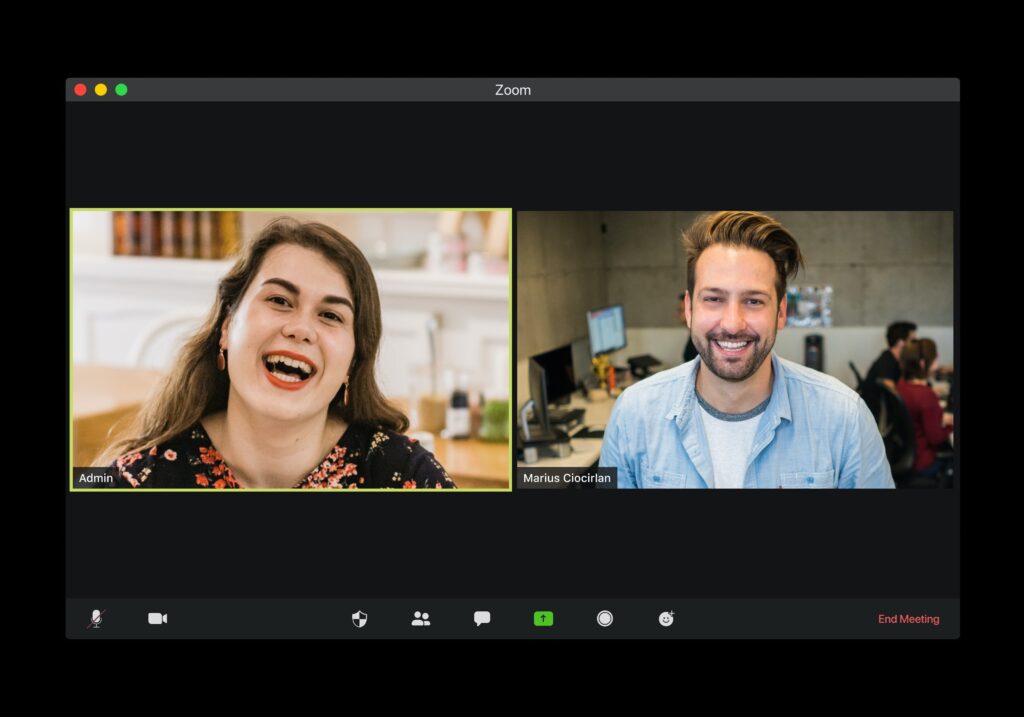
Introduction
Since the onset of Covid-19, animal sanctuary virtual education offerings have proved to be a welcome alternative to onsite educational programming. But even if your sanctuary’s onsite visits have begun to resume, virtual programs can continue to serve as complementary programming and a wonderful way to share your message and mission with as many communities as possible. The purpose of this resource is to provide animal sanctuaries with a general overview of some of the advantages and potential challenges of virtual programming as well as several specific virtual program options that can be designed and facilitated in a sanctuary setting. Though all of them will not be relevant or feasible for every organization, each one offers unique learning opportunities and challenges that should be considered prior to planning and implementation.
Advantages of Virtual Sanctuary Education Programs
Geographical Convenience and Safety
Visitors can participate in your virtual education programs from the safety and comfort of their own homes or wherever they have internet access.
Versatility
Virtual programs allow opportunities for at-home learners, classroom learners, larger audiences, outside organizations, businesses, folks who live far away, and more, to meet your residents and learn about your mission.
Accessibility
On-screen text and supporting imagery can be utilized to make the content easier for visitors with different physical, vision, and hearing disabilities to access.
Flexibility
Simple tools like Facebook and Instagram allow you to record your virtual visits and education programs live and save them for people to watch later at a time that works best for them. Tools like YouTube and Vimeo allow you to pre-record your programs in advance and edit as you see fit. Other tools like Live:Air and Padcaster allow you to insert pre-recorded videos into live footage. This can be extremely helpful if you want visitors to meet animals that are out of Wi-Fi range at your sanctuary. Depending on the program, platform, and/or application you use, people might also be able share the link to your virtual program and allow others to join more easily.
Repeated Access to Program Materials
If a participant needs more time to understand some of the content covered in your education program(s), pre-recorded sessions can enable them to go back and watch and listen to them again as many times as necessary. Depending on the programming, repeated access to your learning materials also enables participants to choose the time that works best for them to complete any potential educational readings or assignments.
Q & A Compatibility
Depending on the platform you use, you can answer visitor questions during live video sessions or respond to viewer comments and questions on pre-recorded content.
Collaborative Potential
Virtual programs can offer sanctuary educators and program participants some great opportunities to connect and collaborate with one another! With the help of grouping tools like message boards, online forums, and virtual break out rooms, folks can comment on videos, readings, and other learning materials, provide direct feedback, upload assignments, and hold online discussions. This can be particularly helpful for people who aren’t as comfortable speaking out loud at in-person events.
Potential Challenges to Anticipate
In addition to all of the advantages virtual programs offer sanctuaries, there are some foreseeable potential challenges you’ll want to anticipate.
Technical Know-How
Technology can be intimidating, and at times, overwhelming, but this often depends on how simple or advanced you want your virtual program to be. One solution is to offer structured training for your education program facilitators that will help them feel more confident using the technology. You might even consider hiring or soliciting volunteer help from an IT administrator who can train your staff and help manage and maintain your devices. If you need any more tips or advice, the #edutwitter community is a free and supportive network specifically for educators when it comes to utilizing technology in learning spaces.
When you’re planning a virtual event or program, it’s also important to invest in the right technology (e.g. wireless microphones for facilitators who are far away from their recording device), platforms, and applications. Consider whether the technology you’re evaluating is the right fit for your particular needs before investing in it. Taking the time to do this will help you avoid wasteful purchases. Here are some video conferencing and hosting systems to look into for virtual programming: Zoom, GoToMeeting, Facebook, Instagram Live/IGTV, TikTok, Microsoft Teams, Webex, GoogleMeets, Vimeo, Airbnb Experiences, YouTube, Live:Air, and many more. Here are some online course platforms to look into: Teachable, Mighty Network, Learndash, Thinkific, Skillshare, Udemy, and Podia.
Accessibility
Consider in advance how you will address issues of access to your virtual programming and the materials you use. Accessibility needs can vary for both sanctuary representatives and participants depending on any needs or disabilities that require specific accommodations, your programming, platform(s), internet connection, and devices that have to be enabled. Many disabilities, such as those involving sight, hearing, and movement, can be effectively addressed in online environments through the application of specialized technologies developed for those specific purposes. Common accommodations include captions, narrated descriptions of visual elements, and color coordination. For more tips on how to make your online educational programming more accessible for Deaf and hard of hearing folks, please click here. For more tips on how to make your online educational programming more accessible for blind and visually disabled folks, click here. In terms of internet access, bandwidth and speed can be particularly limited in some places, which makes file transfer and page loading speeds very slow. You can help mitigate this issue for folks by working with your team mates to find the appropriate balance between file size and quality. Large files often need to be compressed.
Engagement
It can be challenging to keep people engaged and focused in a virtual setting, especially for long periods of time. Visitors can easily close their browser window or get distracted and move on to something else. To help mitigate this potential issue, make sure you and your team prioritize navigation and user experience issues during program development. Unintuitive layout, too many links, unclear directions, and a lack of interactivity are all issues that need to be addressed. If you are facilitating any kind of online workshop or course, consider creating shorter lessons and learning modules that can provide maximum scheduling flexibility and hold participants’ attention more steadily.
It can also be tricky to answer questions while livestreaming. Consider having one sanctuary representative solely answering visitor questions via chat while another sanctuary representative guides visitors on-screen.
Virtual Education Program Options
So, what exactly are your options when it comes to virtual educational programming in a sanctuary setting? Let’s look at some specific virtual program options more closely.
Virtual Tours, Classroom Visits, and Field Trips

Virtual tours and classroom visits have all of the same benefits of onsite tours without the in-person interaction and physical challenges. Though visitors won’t be able to meet your sanctuary residents face-to-face, virtual visits can provide unique opportunities for people to meet farmed animalsA species or specific breed of animal that is raised by humans for the use of their bodies or what comes from their bodies. in real time and in a context that does not view them as exploitable. They also provide visitors an opportunity to meet certain animals on-screen who are not interested in groups of strangers in their space or who are afraid of humans. In essence, they allow sanctuaries to preserve resident privacy and self-determination as well as everyone’s physical and mental safety.
Virtual classroom visits are usually more formalized than virtual tours. They can include 20-30 minutes of a visit with specific residents and staff followed by a discussion on a focused topic such as: animal care and health, modern food systems, plant-based food, human health, zoonosisAny disease or illness that can be spread between nonhuman animals and humans., climate change, the impact of food systems on workers and local communities, and/or an exploration of any other theme that aligns with your mission. Like in-person visits, virtual classroom visits can be adapted to support state educational standards if necessary. There is also the possibility for students to ask and answer questions aloud or in a group chat if they’d rather do that.
Recently, Animal Place began offering a unique kind of virtual tour for visitors called the Museum of Animal Farming. Inspired by their onsite museum located in Grass Valley, California, the virtual Museum of Animal Farming offers folks the opportunity to learn about Animal Place, modern animal agricultureThe human production and use of animals in order to produce animal products, typically for profit., and ways that folks can help combat animal exploitationExploitation is characterized by the abuse of a position of physical, psychological, emotional, social, or economic vulnerability to obtain agreement from someone (e.g., humans and nonhuman animals) or something (e.g, land and water) that is unable to reasonably refuse an offer or demand. It is also characterized by excessive self gain at the expense of something or someone else’s labor, well-being, and/or existence. right from the comfort of their own homes or anywhere they have internet access. Visitors can use their computer’s mouse or arrow keys to navigate through the museum and click on photographs, graphics, and videos to learn more about each section of the museum and listen to audio captions. Animal Place has kindly offered this as a free resource for anyone to utilize, including other animal sanctuary educators who might like to use it in their own educational programming! To check out the museum, please click here.
Downloadable Curricula and Lesson Plans

Downloadable curricula and lesson plans are affordable learning options that can help broaden the reach of your education programming and sanctuary mission even further. As with classroom visits, curricula and lesson plans can be adapted to meet the needs of specific areas of interest (science, history, math, language arts, etc.) and state educational standards. They can also be free or purchasable at a fixed price or suggested donation. They can be easily accessed with internet connectivity and offer flexibility for both educators and students looking to learn more from your sanctuary on their own.
If you’re interested in designing a curriculum and/or lesson plan(s) for your sanctuary, here are some additional things to keep in mind:
A curriculum is a comprehensive educational document that lists and describes the specific learning standards, lessons, assignments, and materials used to organize and teach an entire educational course. As you might expect, curricula can take a considerable amount of time to design. A lesson plan might offer you a more feasible option depending on your time and interest, as it is a detailed outline of only one specific topic or assignment. It typically includes a preparation section, an instructional plan, and links to related resources for further learner exploration. Curriculum and lesson plan development both require knowledge of lesson planning strategies and state educational standards, which can change frequently. They also require you to carefully consider the needs of diverse groups of educators and learners.
Webinars

Webinars are live teaching sessions that offer information on a specific topic followed by a live question-and-answer portion with participants. There is a slew of advantages to facilitating and attending webinars:
- Creating and facilitating a webinar costs relatively little money. They are a great option if you’re working with limited resources.
- Attending a webinar costs relatively little money, making them an affordable learning opportunity for visitors.
- Webinars are typically short in length, lasting for 30-60 minutes, making them time efficient.
- They are intended for a wide audience and can include real-time captioning features, making them more accessible and super convenient.
- Though they are usually live, they can be prerecorded.
- People attending your webinar are interested in what you have to say. This gives you the opportunity to give background information that is usually more difficult to convey in other media.
- They are an ideal place for sanctuaries to obtain feedback.
As with every sanctuary education program, webinars are not without their own challenges:
- They are scheduled presentations, so some folks will not be able to attend depending on the time.
- Webinars are also more generic in nature as they are typically lecture-style presentations and less interactive than other forms of learning.
- Technical difficulties can arise.
E-courses/Online Courses

Similar to what you’d experience in a university course, e-courses and online courses deliver more in-depth knowledge on a particular subject matter as they are typically divided into multiple modules, lessons or units. Here are some of the opportunities e-courses can offer sanctuaries and their supporters:
- The cost to facilitate and attend an e-course is relatively low since it’s online. As with other virtual offerings, there are no travel fees, lodging fees, etc.
- Course content can be accessed any time as long as the learner is enrolled in the course.
- Learners can work through the course at their own pace and review the materials as often as they’d like.
- Sanctuaries can incorporate various resources including supplements and downloadable PDFs that compliment their course.
- E-courses can include interactive activities such as assessments and exercises.
- Certifications aren’t required, but are usually given after a learner has completed a course.
- There are zero space restrictions, meaning there is no limit to the number of people you can admit. The number is completely up to you.
- People can attend from anywhere in the world.
- Online courses are great for sanctuary representatives who aren’t interested in public speaking.
And here are some of the more challenging aspects of e-course development and facilitation:
- They can be time-consuming to make, as they are often comprehensive.
- They can create a sense of isolationIn medical and health-related circumstances, isolation represents the act or policy of separating an individual with a contagious health condition from other residents in order to prevent the spread of disease. In non-medical circumstances, isolation represents the act of preventing an individual from being near their companions due to forced separation. Forcibly isolating an individual to live alone and apart from their companions can result in boredom, loneliness, anxiety, and distress.. While some people prefer to work independently, others find comfort in community, and e-courses offer no in-person interaction between facilitators and learners. To help mitigate this issue, consider incorporating grouping tools like message boards, online forums, and virtual break out rooms into your course programming.
- There is often a lack of guidance and accountability on the user’s end.
- As with other virtual offerings, instructors need training to tackle the technical aspects: use of video and audio recording equipment, virtual classroom and lecture capture software, Learning Management Software, e-learning technology, etc. This should be a thoughtful investment for your sanctuary and e-course facilitator.
Virtual Conferences

Like in-person conferences, virtual conferences are formal gatherings of people online who share common goals and ideals. They typically focus on discussions and speeches covering specific topics over a long period of time. Participants are experienced and knowledgeable in the topics being discussed, though they do not necessarily have to be experts. Here are some reasons you might want to consider organizing and hosting a virtual conference:
- The cost to facilitate and attend a virtual conference is relatively low in comparison to an in-person conference since it’s online. As with other virtual offerings, there are no travel fees, lodging fees, etc.
- Virtual conferences allow you a chance to reach and meet a very broad group of people. People can attend from anywhere in the world. As such, they offer great networking opportunities for attendees who want to strengthen their community and be with like-minded people in a more inclusive and safe way.
- Virtual conferences are a fun way to generate new ideas and approaches that can make your sanctuary work more effective. Virtual conferences can also be a great place for you to establish thought leadership and fundraise.
- If speakership sessions are recorded, participants can work through the conference at their own pace and listen to sessions of interest at a time that is most convenient for them.
- Conference supplements and downloadable resources that compliment speakership sessions can be made available to participants.
- Conference can include interactive activities such as assessments, break out rooms, exercises, and online polls.
- Depending on the type of conference management software you utilize, there can be zero space restrictions, meaning there is no limit to the number of people you can admit into the conference. The number can be completely up to you.
Here are some of the challenges you might face if you decide to organize and host a virtual conference:
- Because they are intended for larger audiences, virtual conferences don’t always afford folks the ability to have all of their questions answered.
- Though great for networking, virtual conferences offer participants no hands-on experience.
- Though they are incredibly rewarding, virtual conferences can also be challenging to organize as they are very time-consuming.
- To organize a virtual conference, you’ll need to vet and utilize the right kind of conference management software. This will allow you to market your conference, register attendees, and host the event.
- Like in-person conferences, virtual conferences also tend to be long – lasting anywhere from several hours to several days, so keeping your audience engaged can be tough. You’ll want to plan ahead carefully to mitigate this issue by incorporating as many interactive components as possible, such as live polls, question and answer time, break-out rooms, push notifications, and more.
- You’ll want to choose speakers carefully and compensate them fairly for their talks. You’ll also need to set them up for success during the event and make sure they understand how to use your conference software and have the right setup to speak from home.
- You will likely need one or more co-facilitators and/or volunteers to help you.
Online Discussion Groups
These are groups that can be set up for folks to participate in sanctuary-related networking and mutual aid efforts, or discuss and teach sanctuary-related topics such as compassionate animal care, sanctuary governance, and theory around nonhuman animal liberationA social movement dedicated to the freeing of nonhuman animals from exploitation and harm caused by humans.. Groups like this can be set up on remote platforms such as Telegram, Slack, Google Groups, Facebook, and more.
Blogs, Vlogs, Email Newsletters, and Online Journals

Blogs, vlogs, email newsletters, and online journaling platforms like Substack can be great learning tools for animal sanctuaries to utilize and share information. They offer you the opportunity to regularly update your community on any news that is relevant to your sanctuary and its mission, educate your audience on a specific subject, promote your programs, and attract visitors. While blogs and vlogs can be directly integrated into your sanctuary’s website, you can only embed a Substack subscription sign-up form onto your sanctuary’s existing website since Substack is its own writing platform. If you’re interested in viewing some examples from other sanctuaries, check out Luvin Arms’ online blog called “Stories from the Sanctuary” here, as well as Sweet Farm’s Substack newsletter here.
Social Media
One of the most common ways that folks learn today is via social media platforms like Instagram, Facebook, and TikTok, where millions of organizations and individuals share in-depth knowledge, narratives, stories, photographs, graphics, artwork, and more with their community. Utilizing social media can also be an exceptionally convenient way to educate the public remotely about the lives and issues farmed animals face, particularly because it is fairly accessible and mostly free. Here are some other creative ways your sanctuary can educate the public about your missionThe stated goals and activities of an organization. An animal sanctuary’s mission is commonly focused on objectives such as animal rescue and public advocacy. and message using social media:
- Broadcast sanctuary updates, alerts, and upcoming events
- Livestream workshops and host discussions
- Share the behind-the-scenes of your sanctuary work
- Share recommendations of books and other learning resources
- Read books out loud for kids (live streamed or recorded)
To learn more about how to effectively leverage and implement social media strategies into your organization’s operations, please click here to read our full resource on this topic!
Podcasts

A podcast is a series of pre-recorded audio files made available on the Internet for folks to explore, download, and listen to at a time that is most convenient for them. There isn’t a predetermined type of content, length, format, style, production level, or anything else. They can be broken up into “seasons” like a TV show, or be episodic and ongoing. It’s common for folks who host a podcast to release new episodes on a weekly basis, but there are also daily podcasts, monthly podcasts, seasonal podcasts, and any release rhythm the creator wants! It’s also common for podcast hosts to have conversations with guests who can share more information about their experience and expertise in a particular subject area. If you’re interested in what a sanctuary-related podcast might sound like, check out P.E.A.C.E. Humane’s podcast called Equilibrium here and Catskill Animal Sanctuary’s podcast called Herd Around the Barn here. Here are some of the advantages of developing a podcast for your sanctuary:
- Podcasting is a great way for sanctuaries to get their message out in a relatively accessible way and build a community of people with similar interests. You can talk about anything you want!
- Folks who want to regularly listen to your podcast can subscribe to it, which makes it easy for them to get notified when new episodes come out and stay up to date on your conversations.
And here are some of the more challenging aspects of podcast development:
- Depending on your budget, creating a podcast requires that you have the financial resources to purchase some equipment, including a microphone to transmit your content, a laptop to capture your recorded content and edit the final product, and potentially a pair of headphones to make sure the sound is okay during the recording process.
- Creating a podcast can be time consuming and requires you to understand some technical elements, particularly with the editing process. Depending on your technical skillset, you might need to hire someone to help you edit.
Apps
An app, which is short for “application”, is a type of software that can be installed and run on a smartphone (“mobile app”), computer, tablet, or other electronic device that allows users to perform a specific kind of task. For example, P.E.A.C.E. Humane created the Chick it Out app to offer an educational and affordable humane alternative to live egg hatching projects in classrooms and homes. It allows users to explore the egg development, life stages, and anatomy of chickens. Some of the advantages of apps include:
- Apps are a unique and wonderful way to share your message with a broader audience.
- Apps, particularly mobile apps, are convenient to use. For folks with smartphones, apps can be downloaded directly from the app store that corresponds with the type of mobile device they have. For example, if you have an Apple iPhone, you can download apps directly from the App Store that is located on your phone. Likewise, if you have an Android, you can download mobile apps directly from the Google Play Store and Amazon’s Amazon Appstore.
And here are some of the more challenging aspects of app development:
- To create an app, you have to have a good grasp on a web-based programming language such as HTML, CSS, or JavaScript. Depending on your skillset, you might need to hire a mobile app developer to create an app for you.
- The cost to develop a quality app can be a bit pricey. Apps also typically require ongoing maintenance to fix bugs and update or add new features. When you put an app on a device platform, such as the IOS App Store, you will also have to pay the host of the store.
- Although you can create an app that works for all mobile device systems, they can be harder (and more expensive) to create.
- Folks can be hesitant to download and install new apps on their devices, particularly if they aren’t free or super low of charge.
Online Book Clubs

Hosting an online bookclub is a wonderful way to connect with new and existing community members, have deep conversations about important topics related to sanctuary work, and give greater visibility to a variety of voices and perspectives in the animal liberation movement. You can even invite authors and guest speakers to join your meetings if you’d like them to share more about a particular book and answer book-related questions. If you’re interested in starting an online book club, you’ll want to consider which digital space to utilize so you and your group can communicate and coordinate books and discussion dates. Examples include social media platforms like Facebook or more book club-specific online platforms like Bookclubs and Book Movement. You’ll also want to consider which video platform to use for your virtual meetings. Some of your options include Google Hangouts, Zoom, Skype, and Facebook Messenger.
Educational Websites
Another fun way sanctuaries can educate their community virtually is by creating interactive websites that allow folks to read about, listen to, and engage with farmed animals and concepts and issues related to them. You could also utilize an educational website to provide guidelines or demonstrate a particular process or procedure related to sanctuary work, share photographs, artwork, downloadable guides, and much more. To get a glimpse into the variety of ways an interactive sanctuary website can look like, we recommend taking a look at some of the educational content on Farm Sanctuary’s website here and on microsanctuaryA microsanctuary is a small scale community of human and nonhuman (generally “unconventional or farmed”) animal companions, who live together in a chosen shared lifestyle and in commitment to ending the oppression of all beings. Microsanctuaries adhere to the notion that no nonhuman member of the community should “serve a purpose.” Microsanctuaries can exist in any context: rural, suburban, or urban. A microsanctuary can consist of as small a community as one animal and one human caregiver. For more information on microsanctuary please refer to the Microsanctuary Resource Center. operator Camille Licate’s website here.
Online Guides
Sharing downloadable online guides related to sanctuary topics such as veganismA movement and way of living that seeks to eliminate the exploitation of and cruelty to nonhuman animals as much as possible. Often, veganism is defined synonymously with a plant-based diet, although veganism includes abstaining from elements of animal exploitation in non-food instances when possible and practicable as well., modern agriculture, effective animal advocacy, species-specific care, climate change, and more is an educational opportunity that is well-suited for many sanctuaries. For example, if you are a species-specific sanctuary, what kinds of educational content related to species-specific behavior, history, and care might you be able to share with your community in this format? You might also consider developing an online guide on how to go veganAn individual that seeks to eliminate the exploitation of and cruelty to nonhuman animals as much as possible, including the abstention from elements of animal exploitation in non-food instances when possible and practicable as well. The term vegan can also be used as an adjective to describe a product, organization, or way of living that seeks to eliminate the exploitation of and cruelty to nonhuman animals as much as possible (e.g., vegan cheese, vegan restaurant, etc.)., create an advocacy group, or start another sanctuary in your specific region. For example, you could develop and share a checklist of things folks should consider and do if they are interested in starting a sanctuary (e.g., local zoning regulations, noise ordinances, and sanitation and waste disposal regulations, ways to build positive community relations with landlords, neighbors, and local business owners, etc.).
Patreon
Patreon is a social app that allows folks to launch a personalized subscription-based site to share exclusive content to subscribers, called “patrons”, and generate a consistent stream of funding. There are various types of content that you can share on Patreon, including writing, videos, audio recordings, photography, live streams, and more. For example, your sanctuary might share short excerpts of stories or updates on residents with your Instagram followers, then let them know that the full story or update is available by subscribing to your Patreon. You might also entice patrons by offering special perks like stickers, holiday cards, or physical prints of their favorite photographs from your sanctuary. If you host a podcast, you might offer your patrons early access to episodes, special content like bonus episodes, or a closer look behind the scenes of your work at the sanctuary. If you are interested in seeing what an animal sanctuary Patreon site might look like and entail, take a look at Aloha Animal Sanctuary’s Patreon site here. Some advantages to launching a Patreon site for your sanctuary include:
- Patreon is a great opportunity to widen your reach and grow your sanctuary community.
- The user interface of Patreon is intuitive, minimalistic, and impactful. It requires very little to set up a Patreon site.
- Patreon allows you to generate funding for your mission by creating a paywall and charging patrons a subscription fee to access your work. You know when your monthly earnings will be paid out and can rely on this income to support your work. In addition, patrons can see exactly how their subscription supports your sanctuary and upgrade or cancel their membership with the click of a button.
- You can link Patreon to other social apps like Facebook, Instagram, Twitter, and YouTube.
- Each Patreon site offers a community tab which functions as a message board where patrons can leave messages and chat with each other.
- For an additional fee, Patreon can handle merchandise production, global shipping and support.
Some of the more challenging features of Patreon include:
- Patreon has limited formatting functionality, which can make it hard to include photos and videos together.
- Patreon sites are owned by Patreon, which means you do not control certain aspects of customer service. Patreon also reserves the right to remove your page if they want to.
- As with some other virtual offerings, Patreon requires you to create and manage additional online content that provides subscribers with enough incentive to want to pay for it.
- Deciding what content to paywall and not paywall can be complex. You’ll want to think carefully about this and be as transparent and accountable as possible with all of your subscribers.
- As an additional source of funding, Patreon requires you to carefully consider whether you want to provide tax donation receipts to your subscribers.
Conclusion
Now that you’ve read more about virtual educational programming, here are some important questions for your sanctuary to consider to help you determine what type of program would be most suitable and sustainable for your organization and its community:
- What kind of virtual education program do you think your sanctuary is in the best position to design and facilitate?
- What are your opportunities for virtual education that draw on your sanctuary’s strengths and interests?
- What financial, technological, spatial, and staffing resources are available to you?
- What virtual educational opportunities are currently being offered in your community or region that you might support and build on?
- What virtual educational opportunities are not being offered in your community that you could start facilitating?
Educational Programs and Opportunities Well-Suited for MicrosanctuariesMicrosanctuaries are small scale communities of human and nonhuman (generally “unconventional or farmed”) animal companions, who live together in a chosen shared lifestyle and in commitment to ending the oppression of all beings. Microsanctuaries adhere to the notion that no nonhuman member of the community should “serve a purpose.” Microsanctuaries can exist in any context: rural, suburban, or urban. A microsanctuary can consist of as small a community as one animal and one human caregiver. For more information on microsanctuary please refer to the Microsanctuary Resource Center.
While the educational programs and opportunities described in this resource can be and have been applied in microsanctuary settings, the interactions that can happen with respect to microsanctuaries are often quite distinct from the interactions that can happen with respect to macrosanctuariesMacrosanctuaries are large-scale communities of nonhuman (generally “unconventional or farmed”) animal companions and multiple human caregivers who do not typically share the same living space. Due to land requirements and zoning restrictions pertaining to certain species and larger resident numbers, macrosanctuaries typically exist in more rural settings. Macrosanctuaries adhere to the notion that no nonhuman member of the community should “serve a purpose” and are committed to ending the oppression of all beings. The term "macrosanctuary" has its origins in the The Open Sanctuary Project's desire to distinguish the microsanctuary and macrosanctuary communities. Although they serve a similar purpose, microsanctuaries and macrosanctuaries are inherently different in various ways.. This is in large part due to how they are uniquely positioned with respect to things like geographical accessibility, funding, organizational structure, philosophy, and more. Fortunately, when it comes to designing and facilitating educational and outreachAn activity or campaign to share information with the public or a specific group. Typically used in reference to an organization’s efforts to share their mission. efforts for microsanctuaries specifically, there are a number of wonderful ways to provide opportunities for folks to connect with their resident(s) and mission that are well-suited for and can be adapted to their specific needs and capabilities. To read more about educational programs and opportunities well-suited for microsanctuaries, please click here.
References to Outside Organizations?
This resource contains links to programs and resources provided by outside animal-focused organizations. You can learn about The Open Sanctuary Project’s position on endorsements here!
Sources
What Can Animal Sanctuaries Do During the Covid-19 Outbreak? | The Open Sanctuary Project
In-Person Sanctuary Educational Programming: What Are Your Options? | The Open Sanctuary Project
ADA Compliance and Accessibility for Animal Sanctuaries | The Open Sanctuary Project
All About Social Media for Your Animal Sanctuary | The Open Sanctuary Project
So, You Want to Start a Farmed Animal Sanctuary | The Open Sanctuary Project
Understanding Your Animal Sanctuary’s Zoning Rights and Restrictions | The Open Sanctuary Project
Understanding Donee Acknowledgement Letters at Your Animal Organization | The Open Sanctuary Project
About the Open Sanctuary Project | The Open Sanctuary Project
11 Tips for Organizing a Virtual Conference | Personify Member Clicks
The Museum of Animal Farming | Animal Place
Stories from the Sanctuary | Luvin Arms
Equilibrium Podcast | P.E.A.C.E. Humane
Herd Around the Barn Podcast | Catskill Animal Sanctuary
Chick It Out App | P.E.A.C.E. Humane
Why Farm Animals? | Farm Sanctuary
Aloha Animal Sanctuary Patreon








